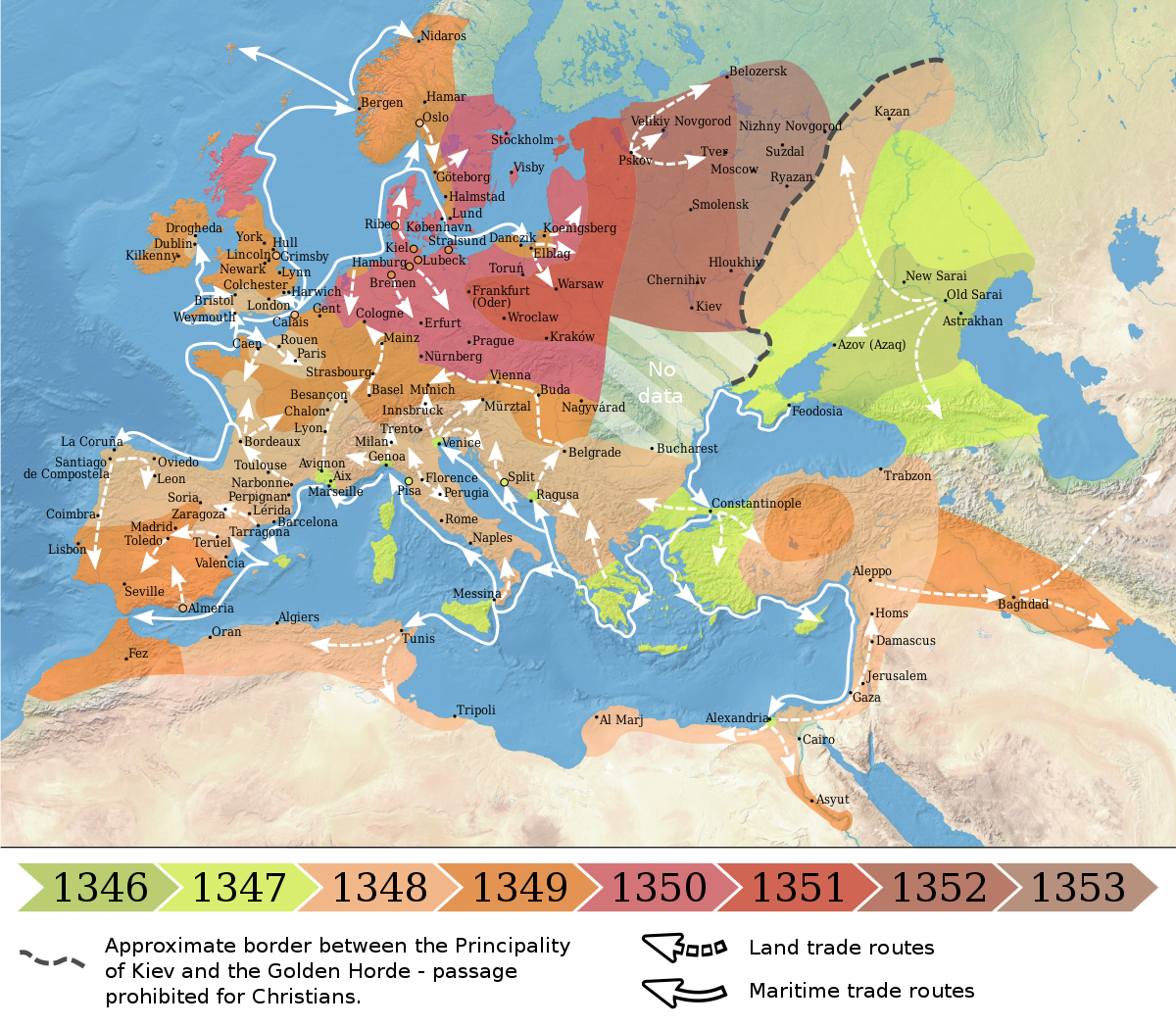Table of Contents
Group 6
<html><font size=6 face=“Arial”>The multiple paths to plague outbreaks</font></html>
Wiki site of the practical exercise of the VIII Southern-Summer School on Mathematical Biology.
Here you will find the exercise assignment and the group's products.
If you are a group member login to edit this page, create new pages from it, and upload files.
Introduction
Black Death was part of a pandemic that killed up to a half of Eurasian population in the 14th century. This series of epidemics was attributed to bubonic plague, as well as the Justinian Pandemics and the recurrent plague epidemics that burst over Europe until the 17th century.
Many rodents are reservoirs of the bacteria that causes plague (Yersinia pestis). Urban outbreaks have been explained by the transmission of the disease from infected rats to humans through flea bites. Nevertheless, this epidemiological model does not match some key features of the Black Death and other pandemics attributed to bubonic plague. For instance, many ancient epidemics spread over large areas faster but had larger recurrence times than the plagues of the 19-20th centuries, from which the classic rat-flea-human cycle was deduced.
A recent review (Setenseth et al. 2008) concluded that there are many other transmission pathways to humans, which can be more or less important according to the ecological context. Such variation in the main transmission routes might explain the marked differences in the epidemiological dynamics among ancient and modern plague outbreaks.
For instance, there was a higher prevalence of blood-sucking bugs in humans 1) at the time of the Black Death than in recent times. The human-to-human transmission by way of these ectoparasites has been advanced as a route that could speed up the spread of plague (Drancourt et al. 2006). On the other hand, Appleby (1980) claimed that the way that plague spread over London during the 1665 epidemic is better explained by the rat-flea-human pathway. According to this author, acquired immunity by rats explains why plague suddenly disappeared from England since then.
Assigment
Propose simple but realistic mathematical model(s) to describe the dynamics of plague epidemics. The model(s) should address at least one issue of the classic rat-flea-human model, taking into account alternative transmission pathways. Any other aspect that can help to address the issues is also welcome, such as acquired immunity (by humans or rats). Key parameters of your model should be well-grounded in the available knowledge about plague transmission and ecology of vectors and reservoirs.
Suggested questions
- Does your model predict single or recurrent epidemics? Why?
- Can the alternative pathway(s) you modeled explain (some of) the distinct patterns between recent and ancient plagues?
References
- Appleby, A. B. (1980). The disappearance of plague: a continuing puzzle. The Economic History Review, 33(2), 161-173.
- Drancourt, M., Houhamdi, L., & Raoult, D. (2006). Yersinia pestis as a telluric, human ectoparasite-borne organism. The Lancet infectious diseases, 6(4), 234-241.
- Stenseth, N. C., Atshabar, B. B., Begon, M., Belmain, S. R., Bertherat, E., Carniel, E., … & Rahalison, L. (2008). Plague: past, present, and future. PLoS medicine, 5(1), e3.


